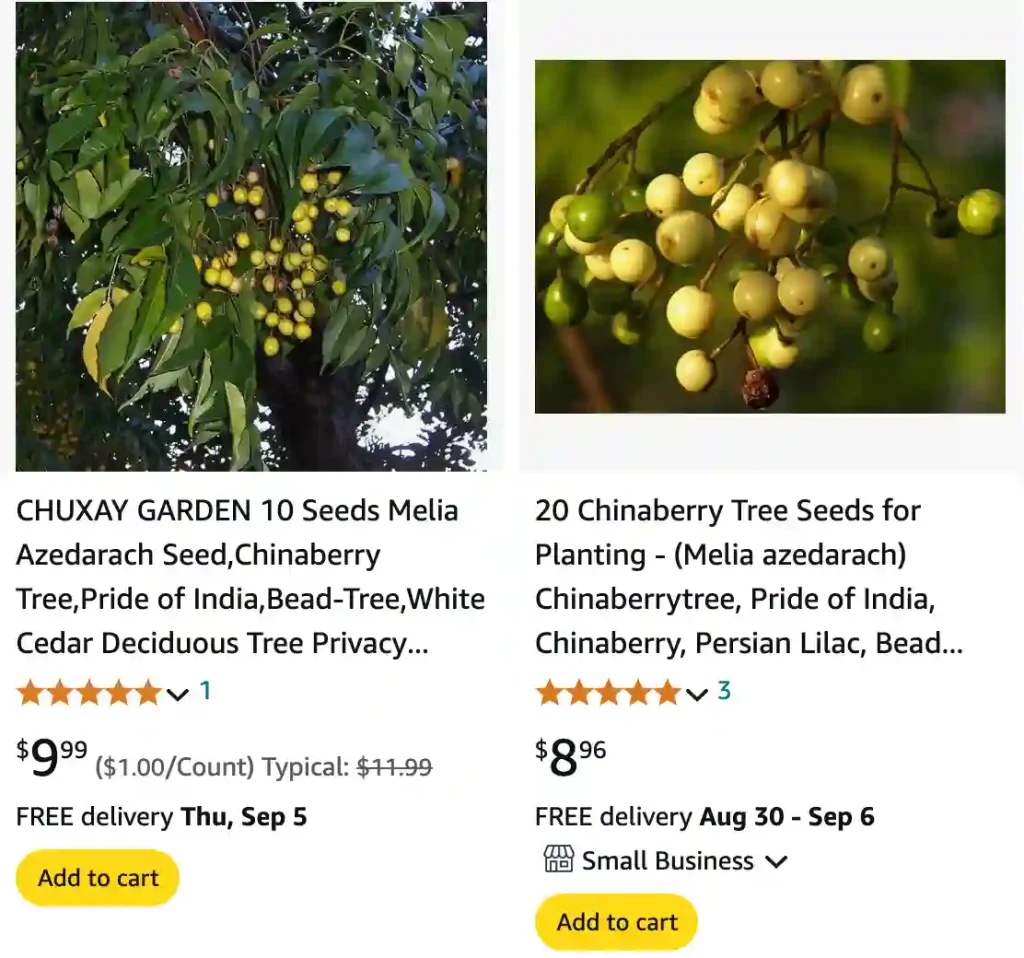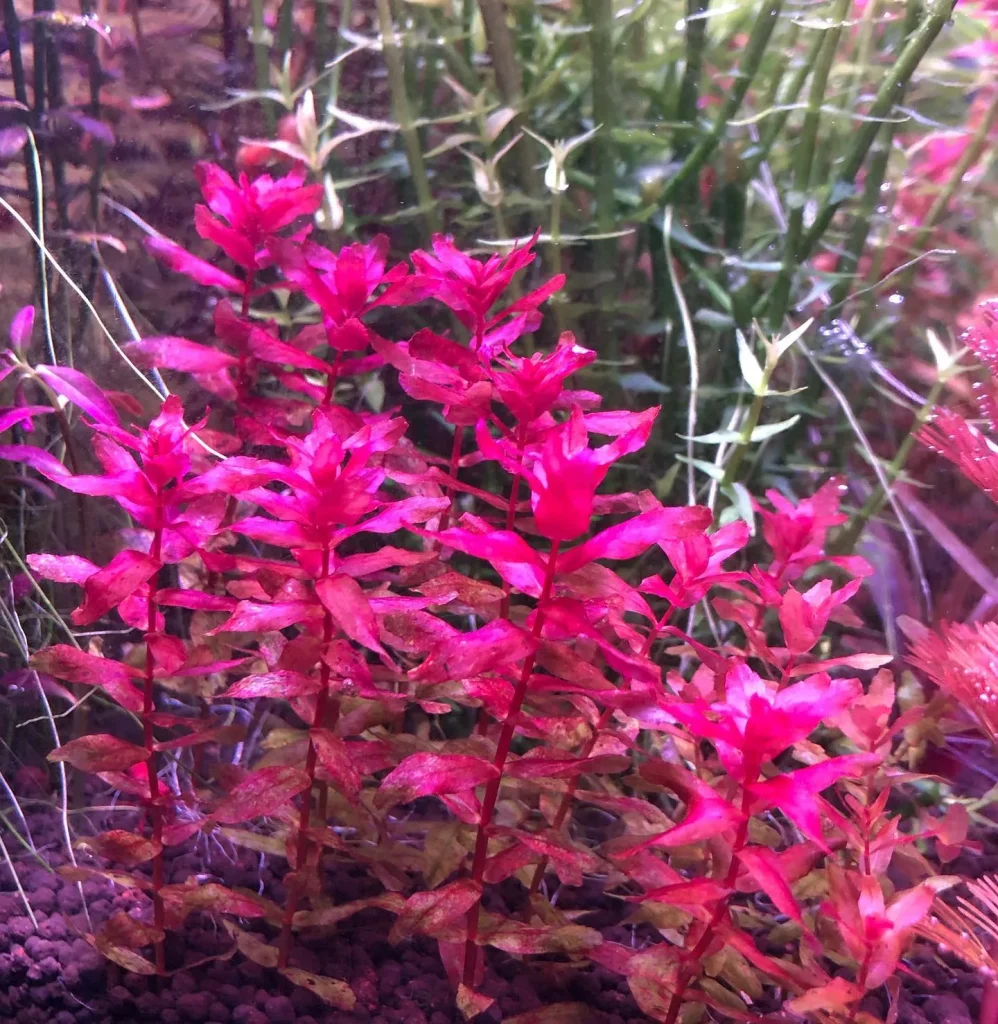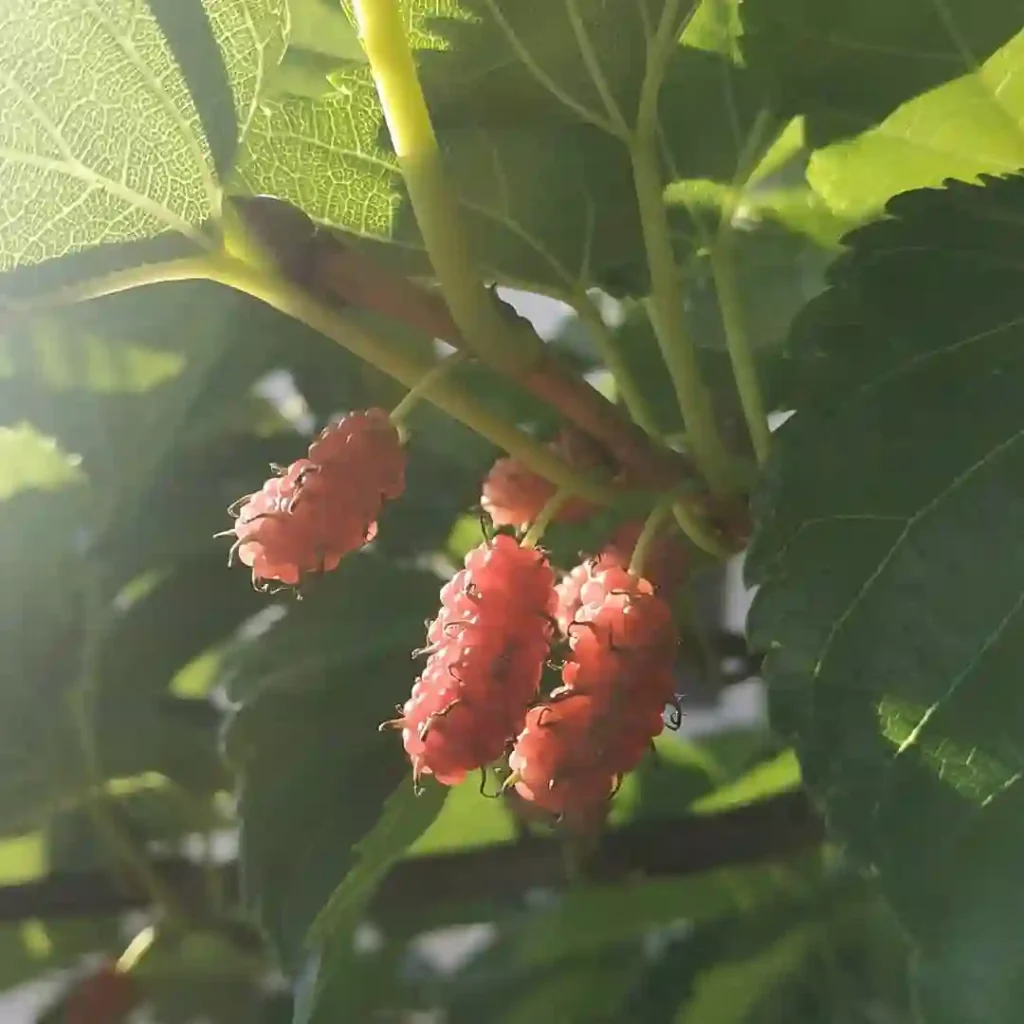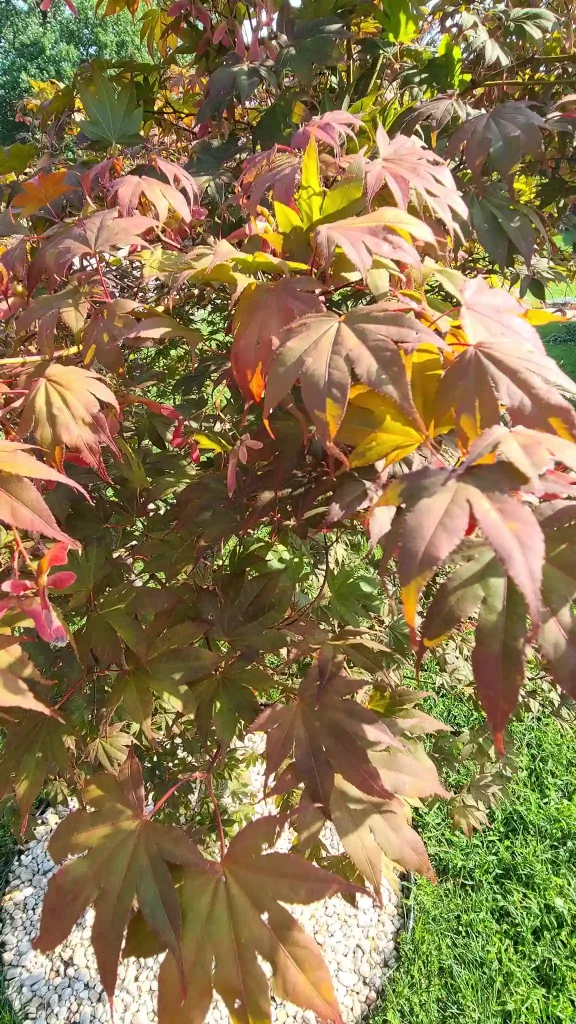
What is a Chinaberry Tree?
A Chinaberry tree, scientifically known as Melia Azedarach, is a deciduous tree native to Asia and Australia. It’s renowned for its rapid growth, reaching heights of 30 to 40 feet and spreading out with a broad, dense canopy. The tree has compound leaves with small leaflets, and it produces clusters of small, fragrant lavender or white flowers. These flowers give way to yellow berries that turn a shade of purple when ripe.
3 Species in Genus Melia
What Does a Chinaberry Tree Look Like?
Chinaberry trees have a distinctive appearance. The leaves are large and pinnate, resembling those of a fern or a palm. They have a lush, green color that turns yellow in the fall. The flowers are tiny but grouped in dense clusters, adding a splash of color to the tree. The berries are round and initially yellow, eventually maturing to a darker shade. The bark is light gray and smooth on young trees but becomes rougher with age.
What is a Chinaberry Tree Good For?
Chinaberry trees have a variety of uses. They are often planted for their ornamental value due to their attractive foliage and flowers. In some regions, they are used for shade in parks and large gardens. The wood of the Chinaberry tree is sometimes used in furniture and woodworking projects because of its durability and attractive grain. Additionally, the tree can act as a windbreak or privacy screen due to its dense foliage.
Are Chinaberry Trees Poisonous?
Yes, Chinaberry trees are toxic. All parts of the tree, including the leaves, flowers, and berries, contain compounds that can be harmful if ingested. The berries, in particular, are toxic to humans and animals, causing symptoms like nausea, vomiting, and diarrhea. It is crucial to keep pets and small children away from the tree to avoid accidental ingestion.
Can You Burn Chinaberry Wood?
Yes, you can burn Chinaberry wood, but with caution. The wood burns well and produces a decent amount of heat, making it suitable for use in fireplaces or wood stoves. However, it is important to note that Chinaberry wood can produce a lot of ash and may not be as clean-burning as other types of firewood. Additionally, the smoke from burning Chinaberry wood might be irritating to some people, so proper ventilation is recommended.
Can You Cook with Chinaberry Wood?
Using Chinaberry wood for cooking is not advisable. The primary reason is the potential for releasing harmful compounds when the wood is burned. These compounds could contaminate the food being cooked and pose health risks. For grilling or smoking, it’s best to use woods specifically intended for cooking, like hickory or mesquite.
How Fast Do Chinaberry Trees Grow?
Chinaberry trees are known for their rapid growth. Under ideal conditions, they can add 2 to 3 feet in height each year. This fast growth makes them a popular choice for quickly establishing shade and privacy in a garden. However, their aggressive growth can also mean that they need regular maintenance to keep them in check.
How Long Do Chinaberry Trees Live?
Chinaberry trees typically have a lifespan of around 30 to 50 years. However, this can vary depending on the local growing conditions and how well the tree is maintained. With proper care, including regular pruning and pest management, a Chinaberry tree can live longer and remain healthy.
Is Chinaberry Edible?
No, Chinaberry is not edible. The berries and other parts of the tree contain toxic compounds that can cause serious health issues if ingested. The toxicity is a major reason why Chinaberry trees are not used for food purposes. It’s best to avoid any consumption of the tree’s parts and ensure that they are kept out of reach of children and animals.
How to Care for a Chinaberry Tree?
Caring for a Chinaberry tree involves regular maintenance to keep it healthy. This includes providing adequate water, especially during dry periods, and ensuring that the tree is planted in well-drained soil. Pruning is important to maintain its shape and remove any dead or diseased branches. It’s also crucial to monitor the tree for pests and diseases, treating any issues promptly to prevent damage.
How to Propagate a Chinaberry Tree?
Propagating a Chinaberry tree is typically done through seed sowing. The seeds should be collected from mature berries and cleaned before sowing. They can be started indoors in pots or directly sown in the garden once the risk of frost has passed. The seeds usually require stratification, which means they should be kept in a cold environment for a period before germination.
What to Plant with a Chinaberry Tree?
Chinaberry trees can be paired with a variety of plants in the garden. Consider planting groundcovers or low shrubs around the base of the tree to provide a complementary look. Some suitable companions include shade-tolerant plants like hostas or ferns. It’s also a good idea to avoid planting other large trees or shrubs too close to the Chinaberry tree to prevent competition for resources.
Common Problems with Chinaberry Trees
Common issues with Chinaberry trees include susceptibility to pests such as aphids and scale insects, as well as diseases like leaf spot and root rot. Regular monitoring and prompt treatment are essential to keep these problems in check. Additionally, the tree can become invasive in some areas, spreading quickly and outcompeting native plants.
Comparing Chinaberry Trees with Other Trees
When compared to other ornamental trees, Chinaberry stands out for its rapid growth and dense foliage. However, its toxicity and potential invasiveness can be drawbacks. Trees like the Red Maple or the Oak may offer similar aesthetic benefits without the same level of toxicity or invasive potential. It’s important to consider these factors when choosing the right tree for your garden.
In conclusion, while Chinaberry trees have their advantages, such as rapid growth and ornamental appeal, they also come with challenges, including toxicity and invasive tendencies. Understanding these aspects can help you make informed decisions about whether or not to include a Chinaberry tree in your landscape.
If i die, water my plants!



